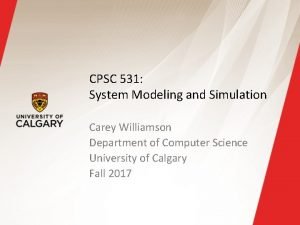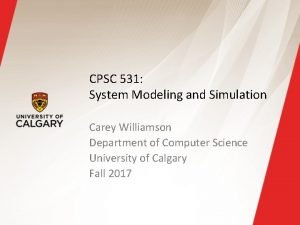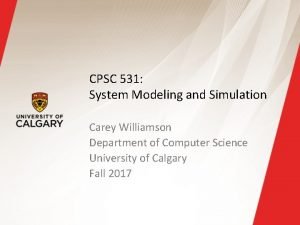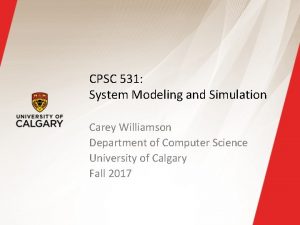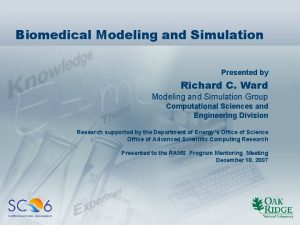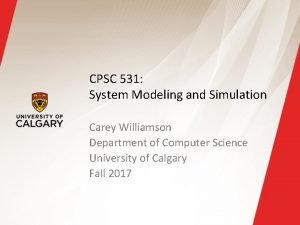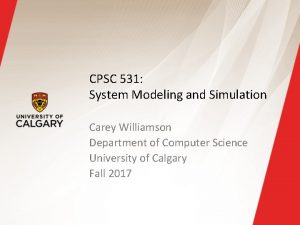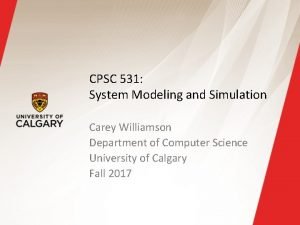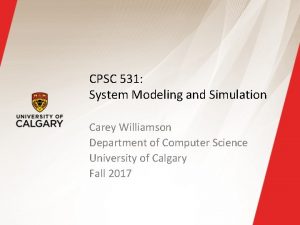CPSC 531 System Modeling and Simulation Carey Williamson









- Slides: 9

CPSC 531: System Modeling and Simulation Carey Williamson Department of Computer Science University of Calgary Fall 2017

Performance Evaluation § Often in Computer Science you need to: — demonstrate that a new concept, technique, or algorithm is feasible —demonstrate that a new method is better than an existing method —understand the impact of various factors and parameters on the performance, scalability, or robustness of a system 2

Performance Evaluation Methodology § The performance evaluation work can be done using either experimental, simulation, or analytical approaches (or a combination thereof) § The design of a performance study requires careful thought about the experimental design/methodology § Need to identify — experimental factors to be tested — levels (settings) for these factors — performance metrics to be used — experimental design to be used 3

Factors § Factors are the main “components” that are varied in an experiment, in a controlled way, in order to understand their impact on system performance § Examples: request rate, file size, read/write ratio, number of concurrent clients § Need to choose factors properly, since the number of factors affects the size of the performance study 4

Levels § Levels are the precise settings of the factors that are to be used in an experiment § Examples: file size S = 1 KB, 10 KB, 1 MB § Example: num clients C = 10, 20, 30, 40, 50 § Example: http (unencrypted), https (encrypted) § Example: sort algorithm = selection, merge, quicksort § Need to choose levels realistically § Need to cover useful portion of the design space 5

Performance Metrics § Performance metrics specify what you want to measure in your performance study § Examples: response time, throughput, packet loss § Must choose your metrics properly and instrument your experiment accordingly 6

Experimental Design § Experimental design refers to the organizational structure of your performance study § Need to methodically go through factors and levels to get the full range of experimental results desired § There are several “classical” approaches to experimental design 7

Examples of Experimental Design § One factor at a time — vary only one factor through its levels to see what the impact is on performance — all other factors are kept fixed at their default settings § Two factors at a time — vary two factors to see not only their individual effects, but also their interaction effects, if any § Full factorial — try every possible combination of factors and levels to see full range of performance results 8

Summary § Computer systems performance evaluation defines well-known methods for designing and conducting performance studies § Great care must be taken in experimental design and methodology if the experiment is to achieve its goal, and if results are to be fully understood 9
